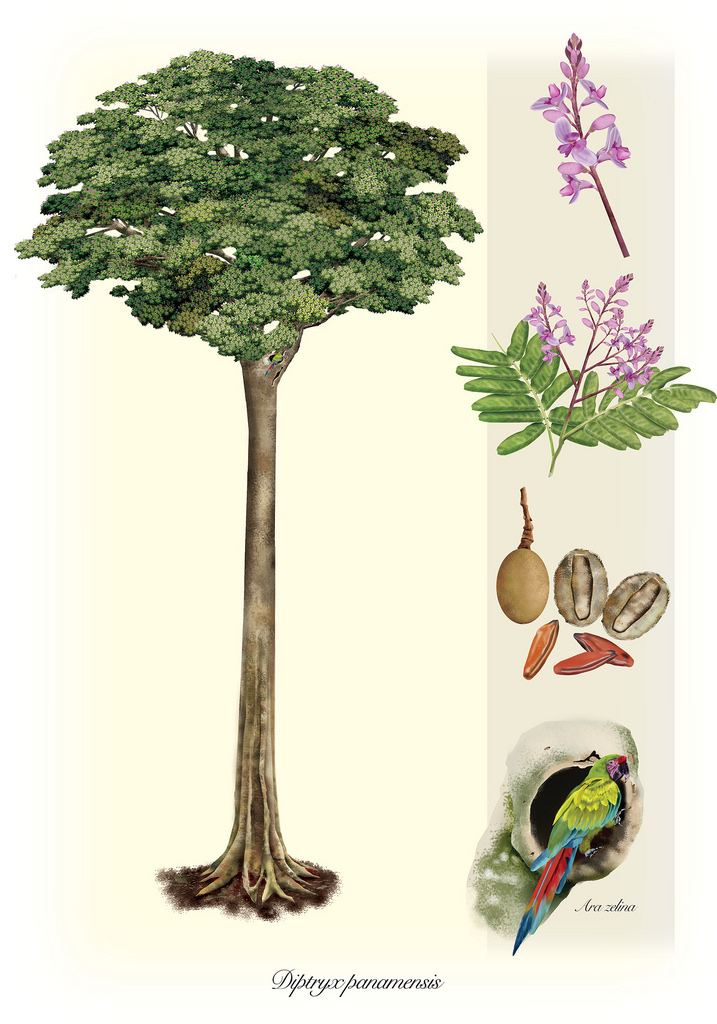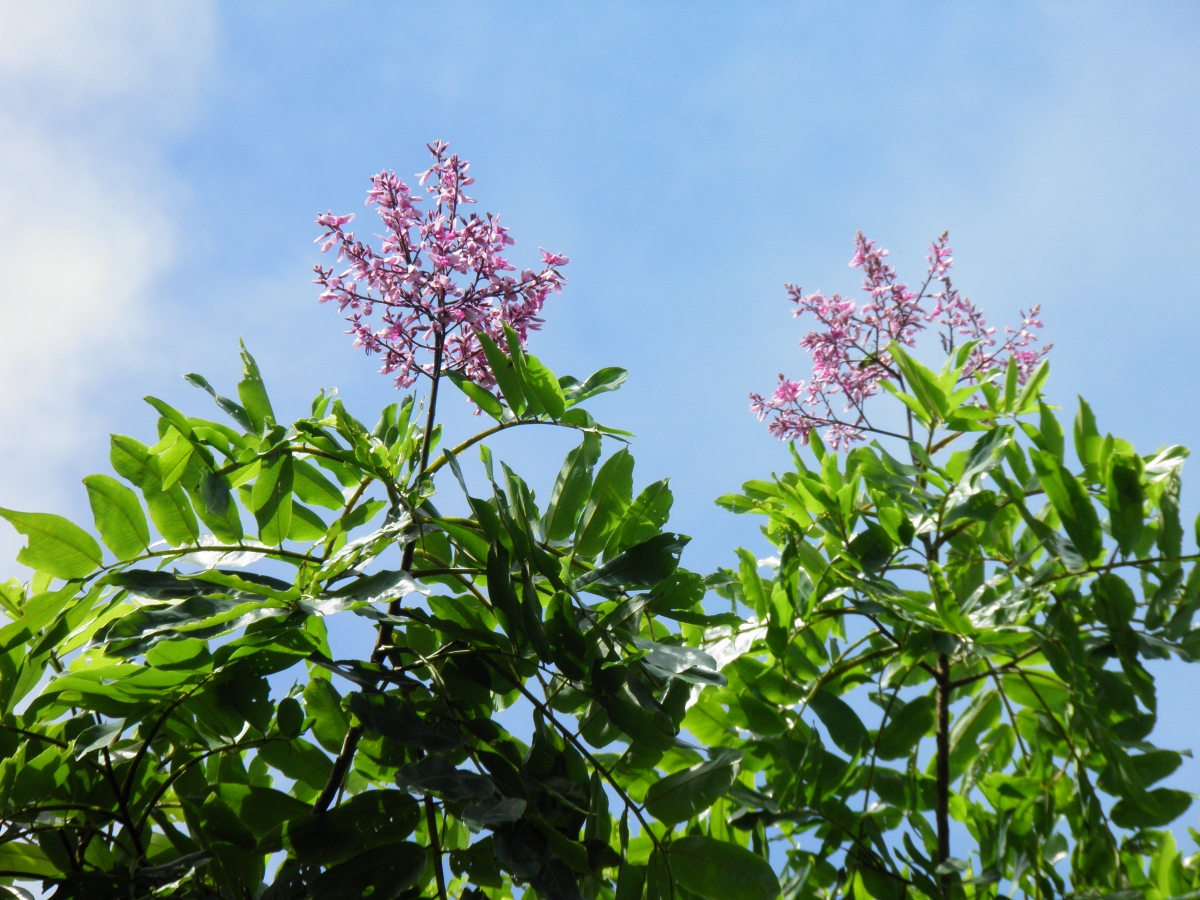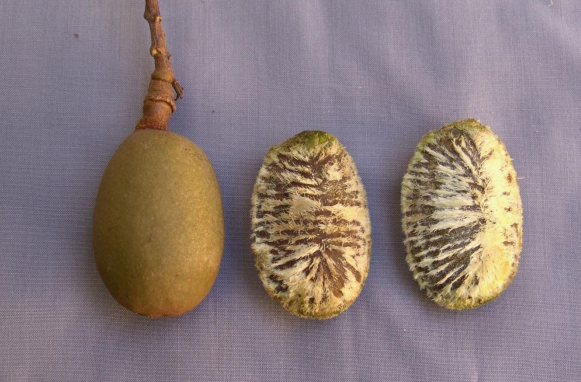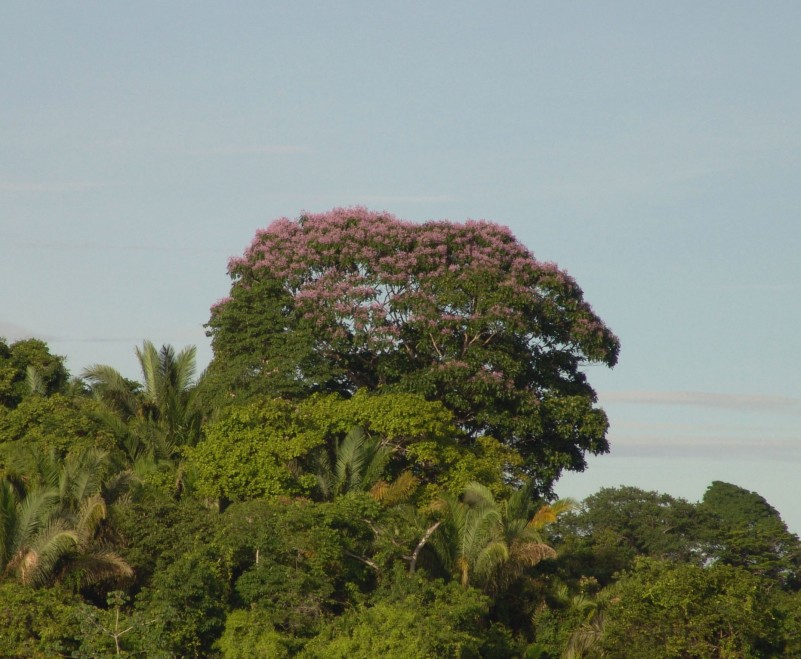Common Names: Almond, Yellow Almond, Papaya Almond
 This imposing tree of the tropical forest can reach heights up to 60-meters, and up to 2-meters in diameter. Its trunk is cylindrical with a yellowish brown bark full of white points called lenticelas. It has a wide root base which provides support. This enormous tree emerges from within the forest with a rounded treetop of intense green color, which only changes color in the months between May and July with the emergence of thousands of purple flowers. After flowering it begins a process of intense biological activity which fills its surroundings with life, due to the formation of its fruits which are oval shaped nuts up to 7 cm long. These fruits are consumed by a great many mammals and birds, especially agoutis, tepezcuintles, parrots and macaws.
This imposing tree of the tropical forest can reach heights up to 60-meters, and up to 2-meters in diameter. Its trunk is cylindrical with a yellowish brown bark full of white points called lenticelas. It has a wide root base which provides support. This enormous tree emerges from within the forest with a rounded treetop of intense green color, which only changes color in the months between May and July with the emergence of thousands of purple flowers. After flowering it begins a process of intense biological activity which fills its surroundings with life, due to the formation of its fruits which are oval shaped nuts up to 7 cm long. These fruits are consumed by a great many mammals and birds, especially agoutis, tepezcuintles, parrots and macaws.
It is primarily due to the macaws that we find our interest to designate this tree as highly important within the Naranjo River Biological Corridor. Besides providing food for the macaws, the yellow almond tree also serves as a nesting safezone for this wonderful bird which forms part of our local biodiversity.









